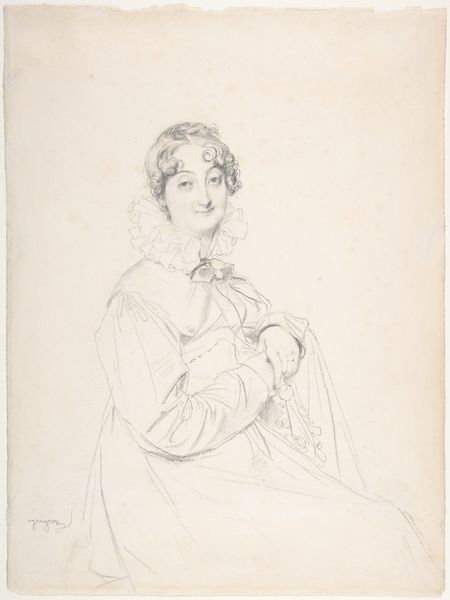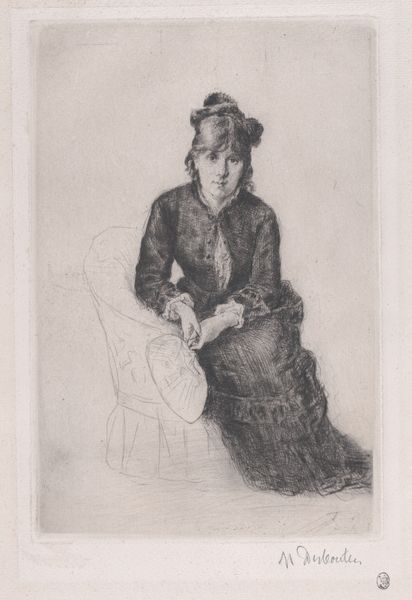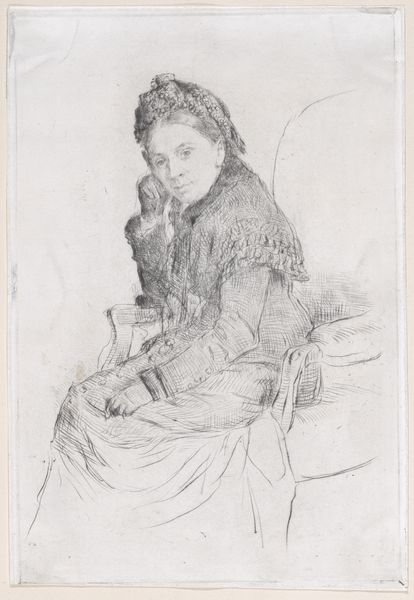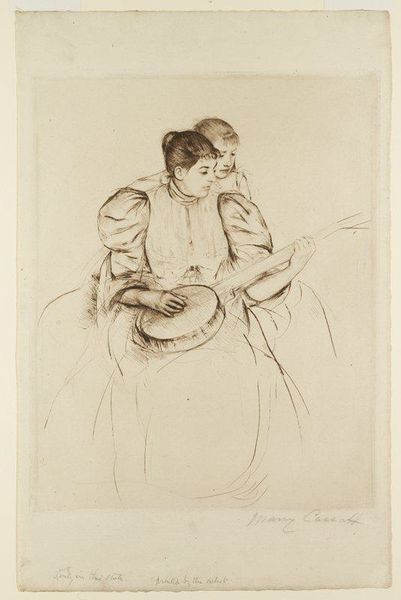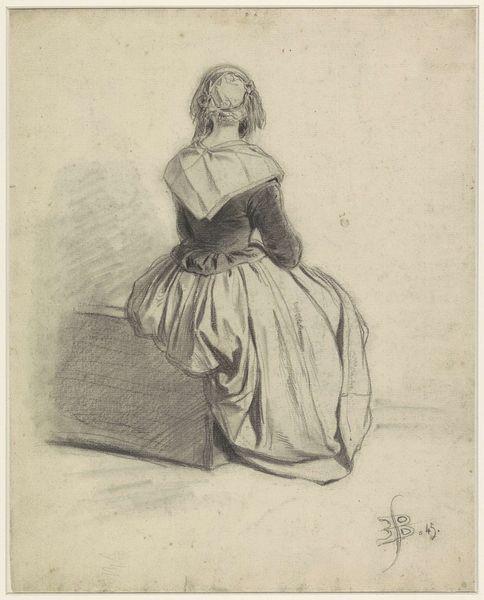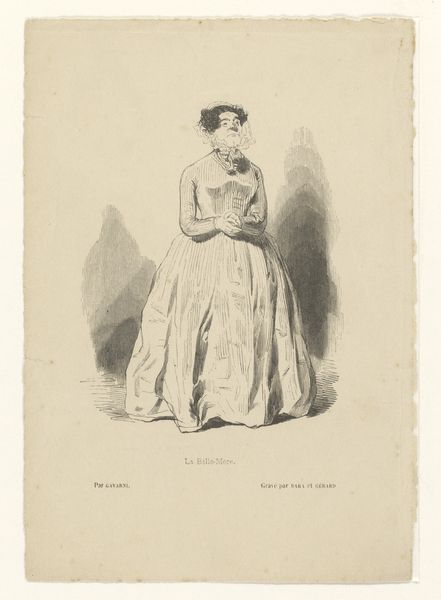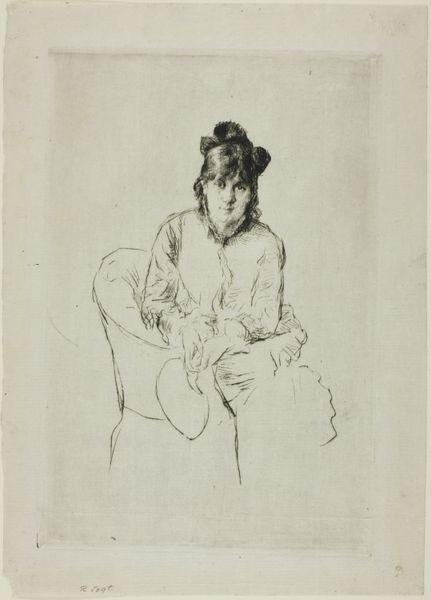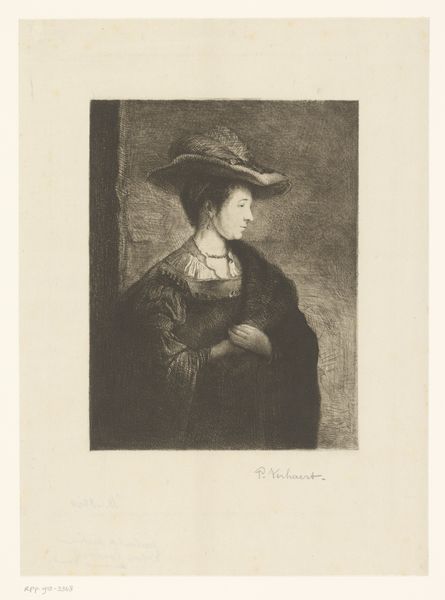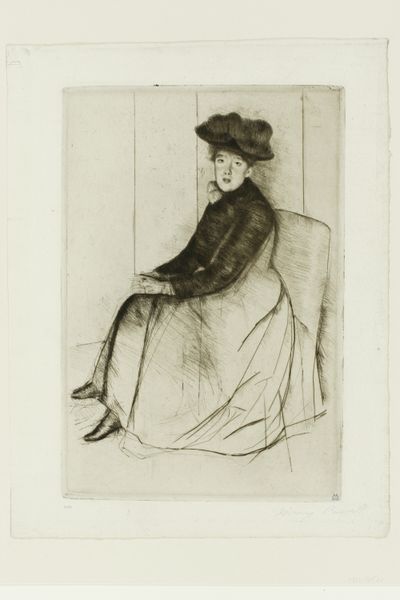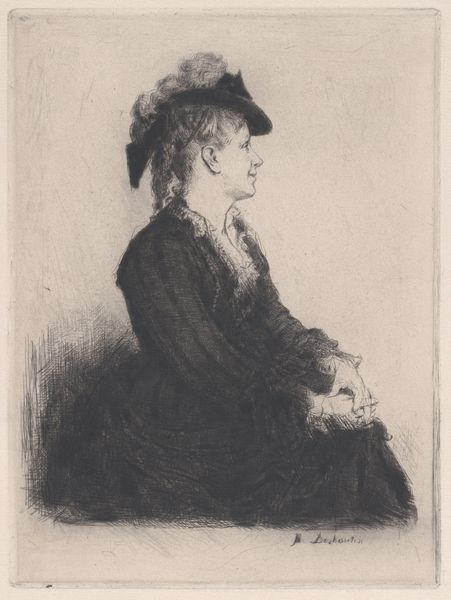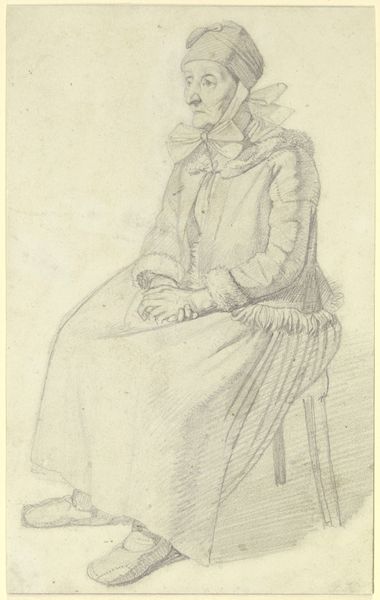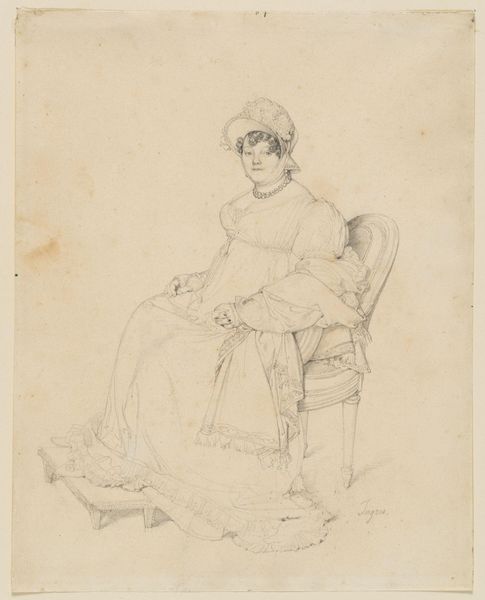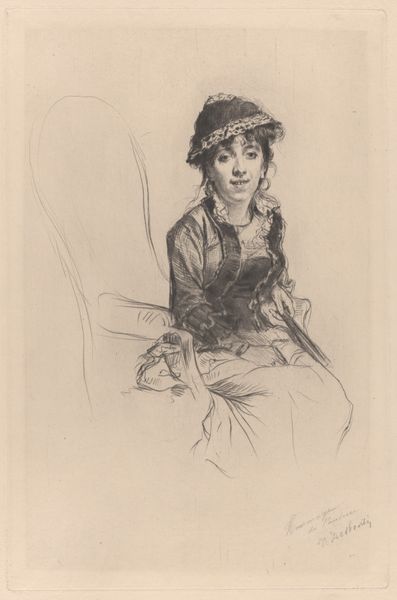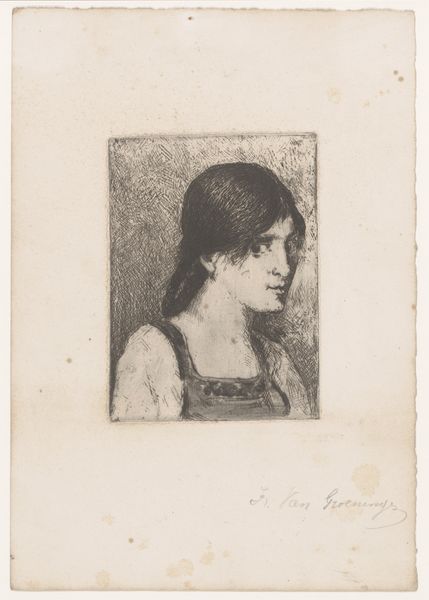
drawing, print, etching
#
portrait
#
drawing
# print
#
impressionism
#
etching
Dimensions: height 262 mm, width 175 mm
Copyright: Rijks Museum: Open Domain
Curator: Welcome. We're standing before Marcellin Desboutin's "Portret van Berthe Morisot," an etching created circa 1876. Editor: There's an immediate intimacy. The etching lines are so delicate; it almost feels like glimpsing a private moment, but a melancholy one. The sitter has her hands resting rather demurely in front of her while sitting in a cushioned chair, a fan placed carefully in her grasp. Curator: Indeed. Desboutin and Morisot were contemporaries, part of the Impressionist circle in Paris. Morisot herself, of course, being a very accomplished painter within the group. It is fascinating that Desboutin chose etching for this portrait; it allows a unique texture and a sense of immediacy. It suggests both casualness and focused dedication. Editor: Absolutely, the technique echoes Impressionism's capturing fleeting moments, right? But there’s more. Note the contrasts of dark and light – they aren’t just descriptive, but also emotive. It accentuates Morisot’s gaze, yet shrouds her slightly. What philosophical reading might be revealed through an examination of the chair's negative space? The visible blank canvas above indicates that all may not be revealed and, moreover, points toward an uncertain narrative that will come to a somber and ultimately bitter conclusion for all. Curator: The etching medium contributes directly to this quality of capturing that 'fleeting' experience through a careful manipulation of shadow. Considering gender expectations of the period, Berthe Morisot struggled for recognition in a male-dominated art world. This piece prompts consideration of women's visibility, and their personal agency and struggles within the creative economy of Paris in that period. Editor: I think you’re spot-on with the gender dynamics; her gaze—while present—seems guarded. It makes one wonder about the act of portrayal itself. How much of her is she choosing to reveal, how much is projected onto her? Also, she may very well have had reservations against allowing such an intimate portrait as this be made; or, in the very least, had her considerations which ran antithetical to those that the author may have prescribed when making it. The somber lighting reinforces these anxieties. Curator: These interpretive lenses bring to light multiple entry points into what Desboutin achieves in this portrait. A successful, intimate character study; as well as a historical piece providing great insight into societal power structures as well as the world of art during that moment in time. Editor: Ultimately it seems like a confluence of Morisot’s stoic nature combined with Desboutin’s deliberate attempt to expose just that, as much of art history turns on such things, even if a somewhat tragic circumstance makes all this possible.
Comments
No comments
Be the first to comment and join the conversation on the ultimate creative platform.
